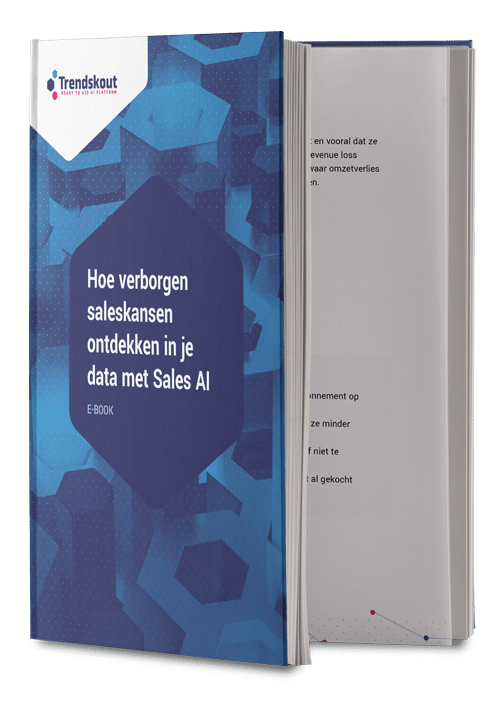As the application of AI in business continues to grow, the companies that reap the greatest benefits stand out for their use of more advanced tools and practices.

The results of the last McKinsey Global Survey on AI indicate that the use of AI continues to grow and the benefits remain significant - although in the first year of the COVID-19 pandemic, they were more noticeable on the cost savings front than on the revenue front. As the use of AI in business increases, so do its tools and best practices.
McKinsey looked at the practices of the companies seeing the biggest gains from AI and found that they are implementing not only more basic but also advanced applications, including machine-learning operations (MLOps). These are things that impact AI implementation for their teams. This combined with more efficient deployment of work resources through AI and increased use of cloud technologies.
Moreover, they are more likely than other organisations to be involved in a range of activities to mitigate their AI-related risks. Mitigate risks - something that a lot of companies looking forward to AI are still burying their heads in the sand about.
AI implementation and impact
The results of the 2021 survey show that AI adoption continues to rise steadily, with 56 per cent of all respondents reporting adoption in at least one function, up from 50 per cent in 2020. 7 percent of respondents report using AI, up from 45 percent in 2020.
The departments where AI is most frequently applied are service operations, product and service development and marketing plus sales. The top three use cases are service operations optimisation, AI-based product improvement and contact centre automation, with the largest percentage increase in AI use occurring in companies' marketing budget allocation and spending effectiveness (Figure 1).


The proportion of respondents that have at least 5 per cent of earnings before interest and tax (EBIT) attributable to AI has increased year-on-year to 27 per cent, up from 22 per cent in the previous survey.
And while the revenue benefits of AI have remained the same or even declined since the last survey - especially for supply chain management, where AI has probably failed to offset the global supply chain challenges of the pandemic - this is true.
The opposite is true for costs (Figure 2). Respondents report significantly greater cost savings through AI than before with the largest year-on-year changes in stocks reporting cost savings from the use of AI in product and service development, marketing and sales, and strategy and corporate finance.


Finally, respondents say the outlook for AI remains strong. Almost two-thirds of respondents say their company's investment in AI will continue to grow over the next three years, similar to the results of the 2020 survey.
The differentiators of AI performance
With this research, McKinsey wanted to learn more about the factors and practices that set the best AI programmes apart from all others: In particular, among those organisations where respondents attributed at least 20 per cent of EBIT to their use of AI - our "AI high performers." As AI becomes more commonplace, they asked new questions about more advanced AI practices, particularly those involved in MLOps, a best-practice approach to building and deploying machine learning-based AI that has emerged in recent years.
While organisations that get less return from AI are increasingly engaging in most of the core AI practices, AI top performers are still more likely to engage in most of the core practices. High-performing organisations also engage in most of the advanced practices more often than others (Figure 3).

There is evidence that adopting such practices helps high performers to industrialise and professionalise their AI work, leading to better results and greater efficiency and predictability in their AI spending. Three quarters of AI top performers say their AI modelling costs have remained the same or even lower than expected, while half of all other respondents say their company's AI project costs were higher than expected (Figure 4).

In the future, the work of the AI leaders could put them even further ahead, as both groups plan to increase their spending on AI by about the same amount.The survey results also suggest that AI leaders could gain some of their efficiency by using the cloud. Most companies, whether high-performing or not, use a mix of cloud and on-premises platforms for AI, similar to what they use for overall IT workloads. But the best-performing companies are using cloud infrastructure far more than their competitors, with 64 percent of their AI workloads running on the public or hybrid cloud, compared to 44 percent at other companies. This group also has access to a wider range of AI capabilities and techniques in a public cloud. For example, they are twice as likely as the rest to use the cloud for natural language speech understanding and facial recognition.
Starting is better than waiting
Companies can wait to adopt AI until the gap between them and the competition is unbridgeable. Or, of course, they can make a start today. A start that can be built on. Solutions in the cloud that are quick to set up as first steps in the AI world are available today.
With Trendskout, we are responding precisely to the market question "how can we get started with AI in a small to medium-sized business without having the knowledge in-house". Well then, check out the Trendskout Platform. If interested, we are happy to book a personalised demo for you. This is a demo that we base on use cases that are closely related to the activities of your company.

